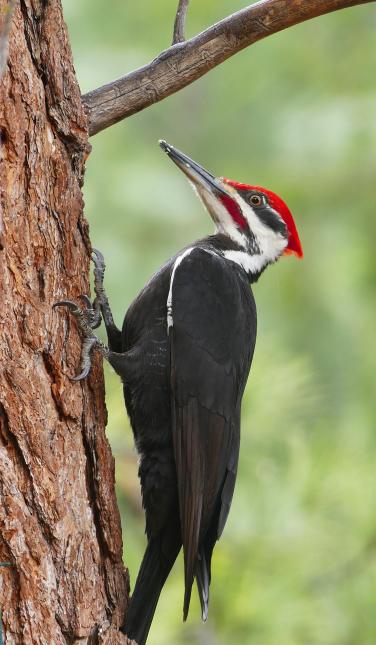Woodpeckers in Florida Populace: Variety Overview and Conservation
Woodpeckers in Florida Populace: Variety Overview and Conservation
Blog Article
Unveiling the Keys of Woodpeckers: Behavior, Environment, and More
Woodpeckers, with their one-of-a-kind behaviors and specialized adjustments, have lengthy fascinated scientists and nature fanatics alike. These amazing birds have an array of interesting keys that clarified their survival methods, environment preferences, and complex interaction methods. By uncovering the secrets bordering woodpeckers' actions and habitat options, a deeper understanding of these bird marvels arises, offering a peek right into their remarkable world. What makes these birds really remarkable, and just how do they navigate their environment with such precision and ability? Let's check out the captivating world of woodpeckers and unwind the enigmatic details that make them such intriguing subjects of study.
Woodpecker Habits Insights
In checking out woodpecker habits, a fascinating display screen of specialized skills and adjustments emerges, losing light on their exceptional ecological particular niche. Woodpeckers, known for their distinct drumming on trees, possess a selection of behavioral attributes that contribute to their survival and success in their setting.
Additionally, woodpeckers show a distinct feeding actions characterized by their capacity to extract bugs from tree bark using their specialized beaks. Their long, barbed tongues help in capturing victim, while their solid neck muscles give stability and precision throughout pecking motions. This feeding method permits woodpeckers to access concealed insect larvae and remove them with amazing performance.
Environment Preferences and Selection
What variables affect the environment choices and option of woodpeckers? One critical factor affecting woodpecker environment option is the availability of appropriate nesting sites. Woodpeckers normally like woodlands with a mix of mature trees that offer sufficient chances for cavity excavation.
Additionally, woodpeckers show a choice for environments with a plentiful supply of food sources. They are mainly insectivorous, feeding upon beetles, ants, larvae, and other pests located in rotting wood or tree bark. For that reason, woodpeckers tend to prefer woody areas with a diverse insect populace to satisfy their dietary demands.
Moreover, the visibility of dead or rotting trees is another vital consider woodpecker habitat selection. These trees not just offer food sources yet likewise offer ideal substratum for dental caries excavation. Dead trees are essential for the upkeep of healthy and balanced woodpecker populations, as they play an essential role in the woodpeckers' life cycle and ecosystem characteristics.
Feeding Practices and Diet Regimen Structure
Woodpeckers show a specialized feeding actions focused on foraging for bugs within numerous environments. In addition to bugs, woodpeckers additionally consume tree sap, fruits, nuts, and seeds, adding range to their diet regimen depending on the season and accessibility of food resources.
The foraging techniques of woodpeckers are well-adapted to their arboreal lifestyle (Woodpeckers in Florida). Their ability to excavate wood not only offers them with food but also helps in producing nesting tooth cavities and establishing areas. Woodpeckers play a vital duty in preserving the health and wellness of woodlands by managing insect populations and aiding in the decomposition of wood. Understanding their feeding habits and diet make-up is crucial for preservation initiatives aimed at protecting these distinct and valuable birds.
Drumming Seems and Communication
Utilizing quick drumming noises on various surface areas, woodpeckers use an unique form of interaction to indicate area boundaries and bring in companions. This drumming behavior is not just a way of communication yet likewise acts as a means for woodpeckers to establish their visibility within a specific area. The strength, speed, and pattern of the drumming can share essential information to various other woodpeckers in the vicinity.
Woodpeckers make use of drumming noises to announce their existence in a territory and to alert off potential burglars. The loud and repeated nature of the drumming works as a clear signal to other woodpeckers that the location is already claimed. This aids in minimizing disputes and minimizing physical fights in between individuals.

Survival Adaptations and Specialized Composition

Conclusion
In conclusion, woodpeckers show one-of-a-kind habits, such as drumming audios for communication, and have actually specialized composition for survival in their chosen habitats. Their feeding behaviors and diet plan structure further show their versatility to various settings. By view website recognizing these elements of woodpeckers, scientists and preservationists can better protect and maintain these interesting birds and their ecosystems.
Report this page